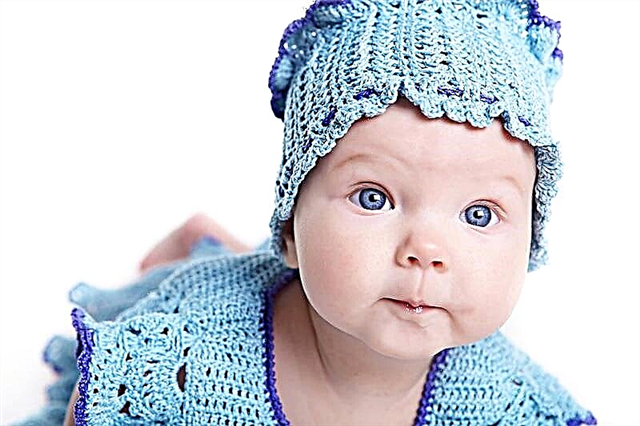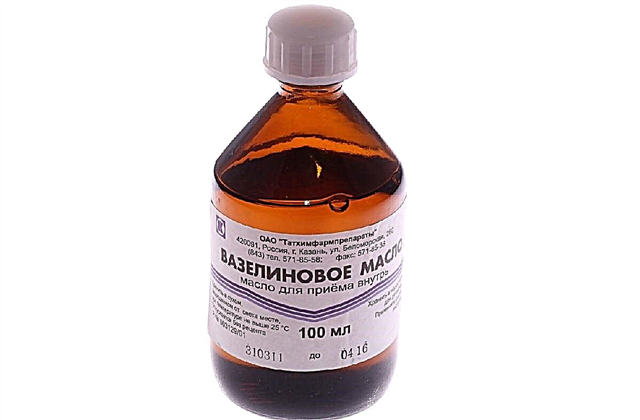How to properly treat a cough with phlegm in a child, only the doctor will tell after examining the baby and listening to his breathing. Parents will not be able to diagnose on their own, which means they will not be able to conduct therapy. You cannot postpone a visit to the doctor if the cough does not go away for 2-3 weeks, the child's well-being worsens, the more his temperature rises. Delay can lead to irreparable consequences.

Child
Where does a wet cough come from?
When a toddler gets sick, the upper respiratory tract is usually affected first. A dry, unproductive cough begins, in which the child does not have sputum. After it there is no relief, it happens in fits and is very exhausting. The child does not seem to be able to cough up to the end. This condition causes a lot of inconvenience, the crumb tears its throat, and even inhaled air causes discomfort.
During illness, a dry cough gradually becomes wet, which means that phlegm begins to come out. It no longer comes from the throat, but from the chest. This is because the inflammation goes down, affects the trachea, bronchi. During this, mucus begins to be produced more actively. It is necessary to get rid of the source of irritation.
Remember! The cough has a healing function for the body. It is a reflex that allows you to clear the airways, free them from foreign bodies and particles. Together with mucus, they move up to the pharynx. If there is a lot of phlegm, even at a distance, you can hear a gurgling sound accompanying a cough.
It happens that the mucus is too viscous, and the baby cannot cope with it. Then the child does not cough up sputum, or it is excreted in very small quantities. In such cases, a wet cough is considered unproductive.
The airways in children are quite narrow, and besides, babies cannot boast of strong pectoral muscles. Therefore, the baby can not always cough up, getting rid of difficult mucus. Then the condition of the crumbs worsens, because sputum is a favorable environment for bacteria to multiply. A wet cough bothers the baby constantly. Shortness of breath may begin, which usually indicates the onset of bronchitis.
Allergens can also trigger a wet cough. Then it will be possible to get rid of the unpleasant symptom by eliminating the provoking factor. However, anti-inflammatory therapy is necessary.
A wet cough also appears in a child for physiological reasons, not related to inflammation or infection with a viral infection. If the baby's teeth are teething, then salivation increases. As a result, he can cough to clear the accumulated secretions from the airways. This usually occurs in the morning or after naps. Indeed, in the supine position, the mucus does not drain, when the baby gets up, it starts to interfere with him. A similar thing can happen with a physiological rhinitis, which often begins in children at 3-4 weeks of life and lasts for a month, in some babies longer.
Note! It is believed that if a child coughed 10-15 times during the day, then this is not a cause for concern. This is not a sign of the disease.

The baby coughs
Symptoms and types of sputum
Normally, sputum is always formed, even in a healthy person. There is not much of it, it is transparent and liquid. Sputum protects the body from viruses and bacteria, stops their spread.
By the color of the mucus that you get to cough up, you can assess the severity of the disease:
- Yellow sputum indicates that the infection has entered the body, and the immune system began to work, trying to suppress it. Such a color in the secreted secretion can be with sinusitis and asthma, as well as during pneumonia;
- Green - usually appears when bacteria begin to actively multiply. A similar shade often accompanies bronchitis, pneumonia;
- Sputum that is reddish or brown in color should alert you. This means that there is blood in the mucus and you need to see a doctor immediately.
If a healthy child has watery sputum, then during illness it becomes thick and viscous. It is very difficult for a baby to cough up her. This consistency is a sign that bacteria, immune cells, dust particles and other small particles have accumulated in the mucus.
If the baby manages to cough up frothy sputum, this is a bad sign that requires an immediate ambulance call. This could indicate lung disease or heart failure.
It is impossible to make a diagnosis based solely on the color and consistency of the sputum. The doctor assesses the child's condition in a complex, paying attention to all manifestations of the disease.
Why a wet cough is dangerous
Parents need to teach their child to cough up phlegm as soon as possible. This will help to avoid complications associated with the increased reproduction of bacteria and the addition of a secondary infection. This is usually evidenced by a sudden deterioration in health, when, it would seem, the baby has already begun to recover. For example, the temperature may rise again, or the phlegm may turn green.

The baby has a fever
Note! Parents should help a small child to cough up, creating a high humidity at home, and, on the recommendation of a doctor, massage. You need to carry the baby in your arms as much as possible, holding it in an upright position.
Which doctor to contact
Even if parents know how to help a child cough up phlegm, it is imperative to visit a doctor, especially if a newborn is sick. When a child spends a lot of time in a horizontal position, mucus accumulates, if the baby is stuffy, then it also dries up, which leads to complications.
The doctor must constantly observe the baby, listen to his breathing with a stethoscope. With a wet cough, you need to contact a pediatrician, who, if necessary, can send an X-ray to rule out pneumonia. After the examination, the doctor will tell you what to do if the child is unable to cough up sputum. Medication for babies is prescribed when absolutely necessary, it should be used only under the supervision of a doctor. Usually, drugs are used that relieve inflammation of the bronchi and help sputum discharge.
The specifics of child care
If the child does not have sputum, what to do to help him:
- Drinking plenty of water - this helps to liquefy the accumulated mucus and prevents it from drying out;
- Air the baby in the room every day, protecting him from drafts. Monitor the temperature in the room, it should not be higher than 22 degrees. You also need to maintain high humidity at home;
- Walking with an infant if he does not have a fever and the condition does not worsen. Fresh air will only do good. There is no need to be scared if the child coughs on the street - when the phlegm is coughing up, the baby is recovering. The cough may get worse after returning home. This is also a normal reaction;
- Get a massage. His need will be announced by the pediatrician at the reception, he will also show the technique. The main thing is that during the procedure, you need to put the baby on his stomach, placing a roller under it, for example, from a towel. The head should be below body level. The baby's back is lightly patted, stroked, acting from the bottom up, as if driving away phlegm. The main thing is not to touch the area below the ribs, where the kidneys are located. After the procedure, you need to help the child to cough up, acting as carefully as possible. The baby is taken in his arms, held vertically and, while exhaling, the chest is slightly squeezed. Another way to get your child to cough is to apply light pressure to the root of the tongue. This method can cause vomiting, especially if the child has recently eaten;
- Breathe medication through a nebulizer as recommended by your doctor. The use of saline is allowed even without a doctor's prescription. Additional moisturizing of the mucous membrane will not harm a sick child. Medicines, in particular, relieving inflammation, are prescribed only by a doctor. Mucolytic drugs are not recommended for use until at least two years. In rare cases, they are prescribed, but exclusively in a hospital setting.

Inhalation
Note! If the cough gets worse when the baby is lying, then you can turn it over several times from one side to the other. This will allow the phlegm to move away from the walls of the bronchi. As a result, the baby will be able to clear its throat.
Consequences and complications
The most serious pathologies that a wet cough can lead to are purulent bronchitis and pneumonia. If the temperature rises in a child, especially in a newborn, you should immediately call a doctor. When the baby is not yet sitting, and spends most of the time in the crib, the infection rapidly descends, affecting the bronchi and lungs. In a 1-1.5 year old child, immunity cannot be called perfect either, and the baby still has a high susceptibility to colds, but he is already more active and mobile. The baby walks, so the mucus flows naturally, does not stagnate, it is easier to separate from the walls of the bronchi, which reduces the risk of complications.
Note! It is important that the phlegm when you cough up is not green, much less brown or black. Such changes indicate the development of a pathological process that requires medical attention.
Komarovsky's opinion
The famous children's doctor Komarovsky urges parents not to treat the child with the means recommended by friends and relatives. A sick baby must be examined by a doctor. Komarovsky also notes that the baby should not be given expectorant drugs at home. They contribute to the fact that the amount of phlegm increases. It is difficult for a baby to cope with a large volume of mucus, so the cough increases, and the secretion accumulates in the airways, which can lead to bronchitis and pneumonia.
The main task of parents is to create comfortable conditions for the baby. He needs cool and fresh air. Better to dress the child warmly, but once again ventilate the room. You also need to give your baby as much liquid as possible. If the baby is still breastfed, apply to the breast more often. When the child is already familiar with adult food, you can give any drinks that he prefers. The main thing is that they do not contain sugar.

Drinking plenty of fluids
During illness, it is necessary to additionally moisten not only the room in which the baby lives, but also its nasal passages. To do this, you can purchase a saline solution and feel free to bury half a pipette into each nostril. The baby's nose must breathe, this is the first step on the path to recovery. If necessary, you need to remove the snot with an aspirator.
Note! If the nose is stuffed up so that the baby cannot breathe, this affects his sleep, appetite and behavior, you can use vasoconstrictor drops.
Medical treatment is carried out exclusively under the supervision of a physician. Only a specialist will be able to diagnose the child and prescribe the necessary medications.
Prevention
To avoid the appearance of cough and other symptoms of colds, you need to follow the rules:
- Strengthen the baby's immunity. This will help with proper nutrition, walking in the fresh air. You should always dress the child for the weather, focusing on the conditions on the street. Overheating is as dangerous for the baby as hypothermia;
- Breastfeed your baby for at least 6 months;
- Monitor the temperature and humidity in the baby's room. Better to get rid of things that accumulate dust. This applies to carpets, decorative pillows, rugs, soft toys;
- During colds, do not walk with your child in public places;
- Regularly moisturize the baby's mucous membranes. To do this, purchase a saline solution that can be dripped not only during the period of illness, but also for prophylaxis;
- Timely cure ARVI and prevent the transition of diseases to chronic forms. Sinusitis, adenoiditis lead to the fact that viscous mucus, reminiscent of phlegm, constantly flows down the back of the throat. It is she who provokes a wet cough;
- Maintain a clean room, protect the child from tobacco smoke and other odors. The baby may develop an allergic reaction, accompanied by a wet cough, even to perfume or deodorant;
- Wash your hands after the street.

Baby washes his hands
Note! If the child constantly coughs in the morning for physiological reasons, the head of the bed should be raised. Do not put crumbs of pillows under your head, they are not recommended for use until the age of two.
A cough with phlegm in a child, although it brings relief and is considered productive, requires close attention. Improper treatment and non-compliance with the doctor's recommendations can lead to dangerous complications. Folk remedies are unacceptable if a child under one year old is ill. Self-medication can cause serious harm to the health of the baby.



